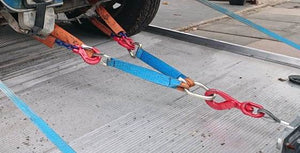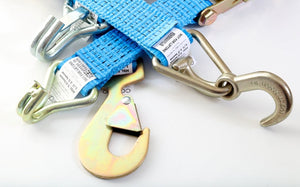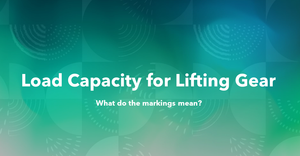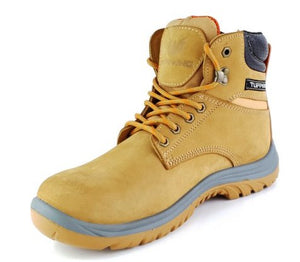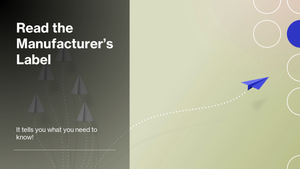A Brief Guide to Lifting Chains and their Operations
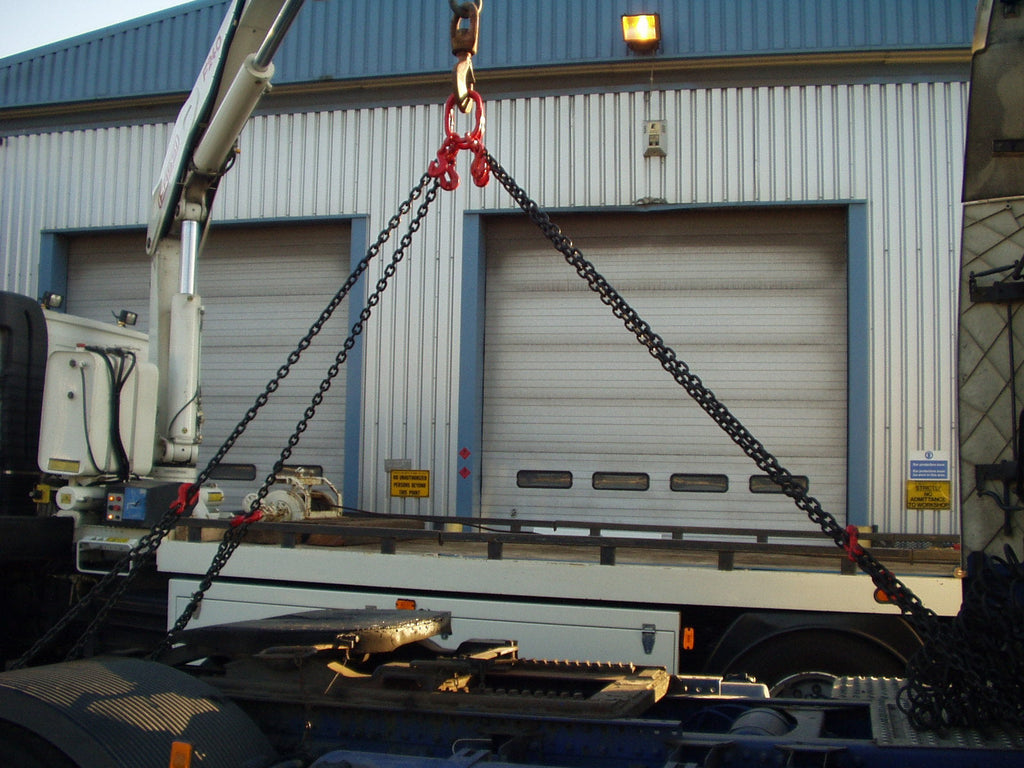
Lifting chain assemblies can be used in many different applications of lifting, pulling, dragging, winching, etc., across many industry sectors, where the weight, size, position or location of an item is an issue to overcome.
But, as there is a wide choice of lifting chains available, choosing the right one for the job in hand can be confusing. We hope the following information will help you make the right choice!
Please be aware, they are called lifting chains for good reason. Although they can be used for dragging, rollovers, etc. the working load limits included in the enclosed tables, are lifting weight limits only.

Good Practice When Using Lifting Chains
Lifting chain slings are rated & certificated for lifting under the Machinery Directive 2006/42/EC and are subject to LOLER (Lifting Operations & Lifting Equipment Regulations), so whether you are lifting, pulling, towing etc the certificated rating does not change.
So to start, some general good practice points you should follow when using lifting chains.
- Plan the lift or operation. Check for obstructions, overhead power lines, etc. and ensure there is enough clearance to lift and lower or drag the load safely.
- Check that the chains are free from damage, not tangled/knotted, links not corroded or badly worn, before attaching to the item to be moved.
- When lifting, ensure lifting point is over the centre of gravity of the load, using shorteners (see below for more info) if necessary, to alter chain sling length to achieve this.
- Ensure any loose parts of the load can be either removed or secured before starting the operation.
- Carry out a trial, by raising or pulling the load slightly and check it is well balanced and stable. If not, adjust slinging set up and check again until you can proceed safely.
- When moving of the item is completed, check it is in a stable condition before removing lifting/dragging equipment.
- On completion, check chain is not damaged before storing away in a safe environment.
Selecting the Right Lifting Chain Assembly
When you decide to purchase lifting chain assemblies, you do so based on the following criteria:
- Grade of steel
- Diameter of chain
- Number of chain 'legs' in the chain assembly
This will then define the Working Load Limit (WLL) of the chain assembly. In essence, the WLL is the maximum safe weight that can be lifted.
So, ensure you select the relevant chain assembly with the load limit suitable for your business operation.



Grade of steel
There are 3 primary steel grade levels available in the UK. These grades are:
- G8 or G80*
- G10
- G12
The higher the grade number means a higher quality of steel used, which results in a higher tensile strength and an increase in the Working Load Limit.
*Note: Grade 8 (G8) assemblies are certificated in accordance to EN818-4 and Grade 80 (G80) assemblies are fully tested & certificated and are supplied with an EC Declaration of Conformity.
The difference between Grade 8 chain slings and Grade 80 chain slings is that G80 chain slings may be manufactured using boron alloy chain, or with fittings that do not conform to EN1677. Whilst Grade 80 and G8 chain slings are rated with the same working load limits (WLL), they may not perform equally under certain conditions.
Diameter of chain
Each grade of chain is then available in different diameters from 5mm upwards. As a rule, the smaller the diameter, the lower the working load limit.
Chain legs
A lifting chain assembly is defined by its chain configuration, i.e. the number of chains used. The standard choice used, applying to the vast majority of applications, are:
- Single Leg
- 2 Leg
- 3 Leg
- 4 Leg
- Endless
- Basket
The tables below are for Grade 8 and Grade 10 configurations. They summarise the choices available and indicate the Working Load Limit (WLL) of each one.
Grade 8 Lifting Chain Table

Grade 10 Lifting Chain Table

Certification of Lifting Chains
The information included in the tables is definitive, therefore, your supplier will need to provide you with certification, which includes a unique certificate number, confirming it conforms to the regulations.
In addition, an identity tag (see image below) is attached to the lifting chain assembly, which will include the following information:
- The unique Identification Number
- Grade of steel used
- Diameter of chain
- Chain leg configuration including working angle limits and
- The working load limit
- Note: If your lifting chain assembly doesn't have an identity tag, it's an illegal chain assembly.

Some Dos and Don'ts of Lifting Chain Use
- Select slinging points so that the angles of each chain fall within the recommended working limits as denoted on the identification tag. Preferably, all chain angles should be approximately the same, to give a symmetrical lift and thus avoiding load instability.
- If the weight of the load to be lifted is not evenly distributed, it is considered to be an asymmetric load. In this case, an expert should be involved in assessing the lifting process.
- With a multi-leg lifting chain, if you do not need to use all chain legs on a specific lift, hook the unused ones into the top ring to avoid them freely swinging and potentially causing injury, damage or unintended hooking.

Cardno Lifting Chain Assemblies
At Cardno, we offer G8 chain in our own range of Lifting Chain Assemblies. We use diameters 7mm, 8mm & 10mm as standard. For different diameters of G8 chain or indeed different grades of chain (G10 and G12) we can be supply to order.
Check out our range on the website and if you require further information on anything to do with this subject, please contact us and we will do our best to help.
- Cardno Sales Team

